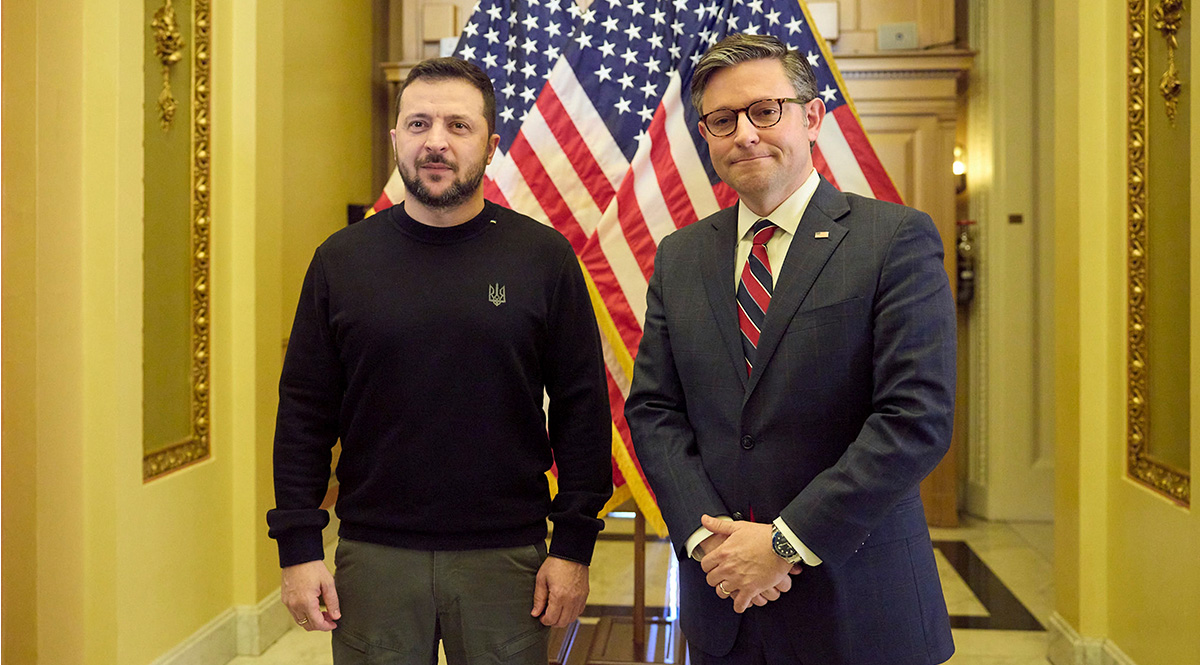U.S. House of Representatives Unblocks Support for Foreign Partners
On 20 April, the U.S. House of Representatives passed bills that include support for Ukraine, Israel, and Palestine, as well as Taiwan and other Indo-Pacific partners. The package of bills will go to the Senate, where it is expected to pass (the vote is scheduled for 23 April), and then to President Joe Biden for his signature. The passage of the bills ends a six-month blockade of U.S. support and will now allow, among other things, Ukraine to mount a more effective defence in its war with Russia, as well as an expansion of humanitarian aid to the Gaza Strip.
 Ken Cedeno / Reuters / Forum
Ken Cedeno / Reuters / Forum
What was the reason for the blockade of support and why did it end?
The main stumbling block has been Republican members of Congress. Last October, President Biden asked Congress to pass additional appropriations to support Ukraine, Israel, and partners in the Indo-Pacific, as well as to strengthen protection of the U.S. border with Mexico. Linking the support to the situation on the border with Mexico prompted Republicans to try to force tighter migration policy. The negotiations, which lasted for weeks, failed to produce results, locking up the aid for months. An additional complication was the lack of agreement around the federal budget. Once a deal was reached and the budget was passed in March this year (almost six months after the original deadline), it prompted House of Representatives Speaker Mike Johnson to present an alternative bill that broke up support for the foreign entities into three separate bills with minor differences, supplemented by a fourth bill relevant to U.S. foreign policy.
What aid will Ukraine receive?
Total appropriations for Ukraine amount to $60.8 billion. Included in this is $23 billion to make up for shortfalls in the resources of the U.S. armed forces after the transfer of armaments to Ukraine, of which $13.4 billion is connected to future transfers from U.S. stockpiles. In addition, $13.8 billion has been provided for long-term military support through the Ukraine Assistance Security Initiative, under which the U.S. government procures armaments from manufacturers for Ukraine’s needs. In total, the support package includes about $27 billion in new military aid to Ukraine. The bill requires the president to transfer ATACMS missiles “as soon as practicable” unless the president determines that such a transfer would be detrimental to U.S. interests (which would have to be reported to Congress). The bill also includes $9.2 billion in economic assistance in the form of a loan (the repayment of which can be cancelled by presidential decision) and $1.6 billion from the Foreign Military Financing (FMF) program to finance U.S. arms and services purchases for Ukraine and allies.
What is included in the bill to support Israel?
The $26.8 billion Israel-Palestine bill allocates $14 billion for military support of Israel. Included are funds for ongoing arms transfers and filling the resulting gaps in U.S. stocks ($4.4 billion), and analogous supplies and filling gaps in missiles used by the Iron Dome and David's Sling missile defence systems ($4 billion). Israel will also receive $3.5 billion from the FMF programme to fund future arms purchases. In addition, $1.2 billion has been earmarked for Israel’s development and acquisition of the Iron Beam laser air-defence system, and $1 billion to increase production capacity for artillery munitions and missiles and rockets of various types. The bill also includes $9.2 billion for humanitarian aid to go to Gaza, but also to Sudan, Ethiopia, and Afghanistan. In addition, it bans funding for UNRWA, which Israel claims is partially infiltrated by Hamas.
What is the scope of the other laws included in the package?
The bill covering support for Taiwan and Indo-Pacific partners secured funds worth $8.1 billion. Most of it ($3.3 billion) is for the development of U.S. infrastructure for submarines, including the nuclear-powered Virginia-class and the new Columbia-class, which is under development. The bill allocates $2 billion from the FMF for arms purchases for Taiwan and other U.S. partners in the region, and $1.9 billion for ongoing arms transfers to countries in the region and to fill the resulting gaps in U.S. stockpiles. There is also $542 million to strengthen the regional presence of U.S. military forces.
The fourth bill, which contains a set of foreign policy initiatives, demands that, among other things, the Chinese company that owns the TikTok app sell its subsidiaries in the U.S. to come under the control of American entities (failure to sell within one year is to result in the blocking of the app). Other parts allow the use of Russian assets frozen by sanctions (estimated to be worth about $5-6 billion held by U.S. banks) to support Ukraine and the U.S. to impose additional sanctions on China, Iran, and entities involved in the smuggling and distribution of the opioid fentanyl and the synthetic amphetamine Captagon.
Why were some in Congress not in support of the bills?
Breaking up the support package into separate bills avoided the formation of a coalition of opponents whose aggregate votes could have blocked the adoption of aid, especially since the package was under a special procedure requiring a two-thirds majority. Of the four bills, the one with the largest opposition—112 representatives, all Republicans—was aid for Ukraine. This demonstrates that they now constitute a narrow majority of their party in the House (101 Republican representatives voted “yea”). The opposition of such a large group on the right to the aid was also partly related to Congress’ failure to pass a bill in parallel tightening migration regulations. The adoption of support for Ukraine is not completely finished and it is possible that the Biden administration will turn to Congress with another request before the elections. Congress will then find itself in a similar quandary, which may prove unresolvable until after the elections or later.





